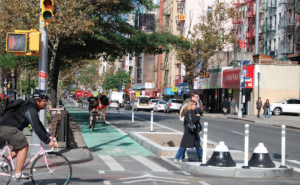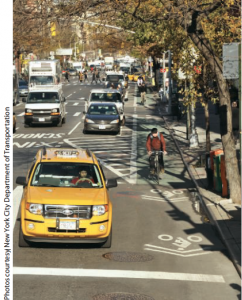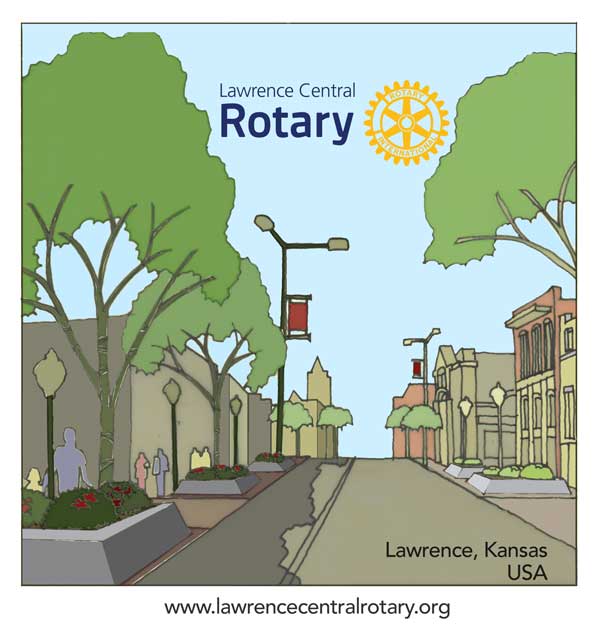This is a repost from the UDK. To see the original story click HERE
Wednesday, February 8, 2012
Imagine yourself flying off of a ramp on a bicycle. You kick the frame of the bike out from underneath you, and all you have to hold on to is the handle bars. Your attempting to do what is referred to as a “tail whip.” If you don’t get the bikes frame back underneath you, expect a lot of pain when you come crashing back to earth.
Red Bull athlete and professional BMX rider Terry Adams from Hammond, La., takes a breather on his bike after performing tricks in front of Wescoe Hall Wednesday afternoon. Adams came to KU as part of a Red Bull campus tour in which he will go to more than 100 universities to perform tricks in front of students. Adams won a gold medal at the X Games in 2005.
BMX has been a continually growing sport dominated by bikes on twenty-inch wheels and mostly male riders since the 1960s. We can see these two-wheeled daredevils doing anything from flying around a dirt track, to launching themselves into the air, to doing a double backflip. But what makes them do it? Is it a way of life, or is it something they do just for the thrill?
The BMX sport took off with the release of the Schwinn Sting-Ray. The Sting-Ray was a bike built primarily for racing, and with it came an increase in the number of people wanting to join the bicycle racing scene so they could be more like their Motocross idols. Riders built their own dirt tracks to race on, and shortly after, Bicycle Motocross was born. Races would be held on dirt tracks all over the nation, and eventually the structure of the bikes evolved into something that was more racing efficient.
BMX stayed true to its racing heritage until the late 1970s when some riders began doing tricks on their bikes instead of just racing around the dirt track. This soon became the branch of BMX known as “freestyle BMX.” It wasn’t until the 1980s that the freestyle branch split into the different disciplines we have today: street, park, vert, trails, dirt and flatland.
Today there are BMXers of all different ages that participate in events nationwide. Tyler Stuart, a freshman from Cedar Rapids, Iowa, has been racing on the dirt tracks for about eight years. With over 500 races under his tires, 20 of which were national events, he can finally consider himself to be an avid rider. He says it’s the thrill of competing against other riders that keeps him on the track. “It’s a place where I can really show my skills as a rider,” Stuart says.
The reasons people become drawn into the sport vary from one person to the next, but for many of the older riders, seeing it on TV piqued their interest. Grant Meisenheimer, an 11-year veteran in the Lawrence BMX scene, first saw the sport during an X-Games event on TV and began taking his bike off small jumps when he was 14. When the Lawrence skate park was built the same year, he says he was immediately hooked.
Photo Gallery
A Double Tailwhip In Slow Motion
Seasoned BMX rider Grand Meisenheimer does a double tailwhip while practicing on the halfpipe at the Kansas City Indoor Skate Park.
For the younger riders, like Anthony Guerrero from Tonganoxie, seeing the veterans at the skate park fly through the air was usually what got them riding. “I started going to the skate park, and seeing Grant do fuckin’ tuck no handers and tail whips in front of me, that’s what really got me going,” Guerrero says. This is when the rider tucks the handle bars into their lap while in the air, and then releases their hands from the bike.
For some riders, going without their bikes would be like trying to walk without their legs. BMX has become a way of life for them, and not being able to ride on two wheels in not an option. “I was married once and that was one reason why we split up,” Meisenheimer says. “She didn’t like me riding as much as I did.”
Although some riders can’t live a day without their bike by their sides, there are some who see it as a strictly recreational sport. Rider Zunwu Zhou, a freshman from Wuhan, China, says he got into the sport after seeing it on TV and in magazines. But to him, BMX is only a hobby and his main focus is on his education. Zhou practices flatland BMX, a form of BMX where the rider performs tricks on a flat surface without the use of jumps or ramps, on occasion at Wescoe Beach.
He says that is the best place for him to practice due to the smooth surface that the area provides. Non-Flatland riders have a harder time practicing on campus, however, because jumping off things and grinding rails is frowned upon by the University.
While he doesn’t see himself as taking his riding to the professional level, Zhou does see BMX as a useful tool in helping him prepare for his future. He says it has taught him how to focus on a task and how to work to accomplish his goals.
Damon Mar, a graduate student from Lawrence, also sees his BMX riding as something to do for fun, but he believes that he would not be the same person without BMX in his life. “It has completely shaped who I am,” Mar says. From the clothes he wears, the music he listens to, the people he looks up to, and the things he wishes to do in life, like becoming a mechanical engineer, Damon says he owes all of it to his riding.
Mar has been riding for almost 12 years, and has had experience in street, park, dirt and flatland BMX. The thing that he says his craft has done for him the most is something that can be seen as universal with almost all BMXers. “It sharpens you mentally to have to focus, and that can definitely be taken outside of BMX and be put into other things.”
Riding BMX has taught Mar many different things, but there is one life lesson that BMX has given him that all riders share since “It gives you a certain motivation, a certain determination, and a sense that if you put your work in you will get something out of it eventually,” Mar says. An understandable statement when considering the amount of time riders devote to riding and learning new tricks. Grant Meisenheimer, for example, says he has spent tens of thousands of hours to get to the level he is at now, and all of those hours were spent doing trial and error runs until he accomplishes what he wants. The same goes for riders across all the disciplines of BMX.











